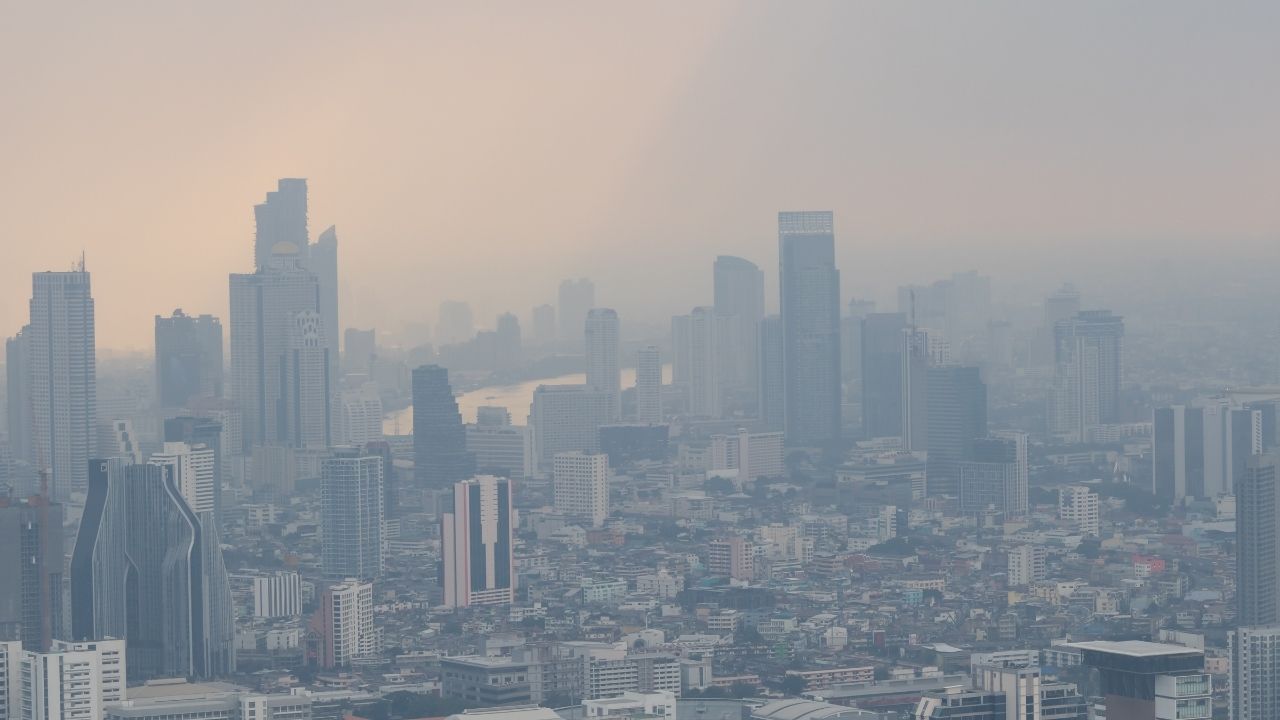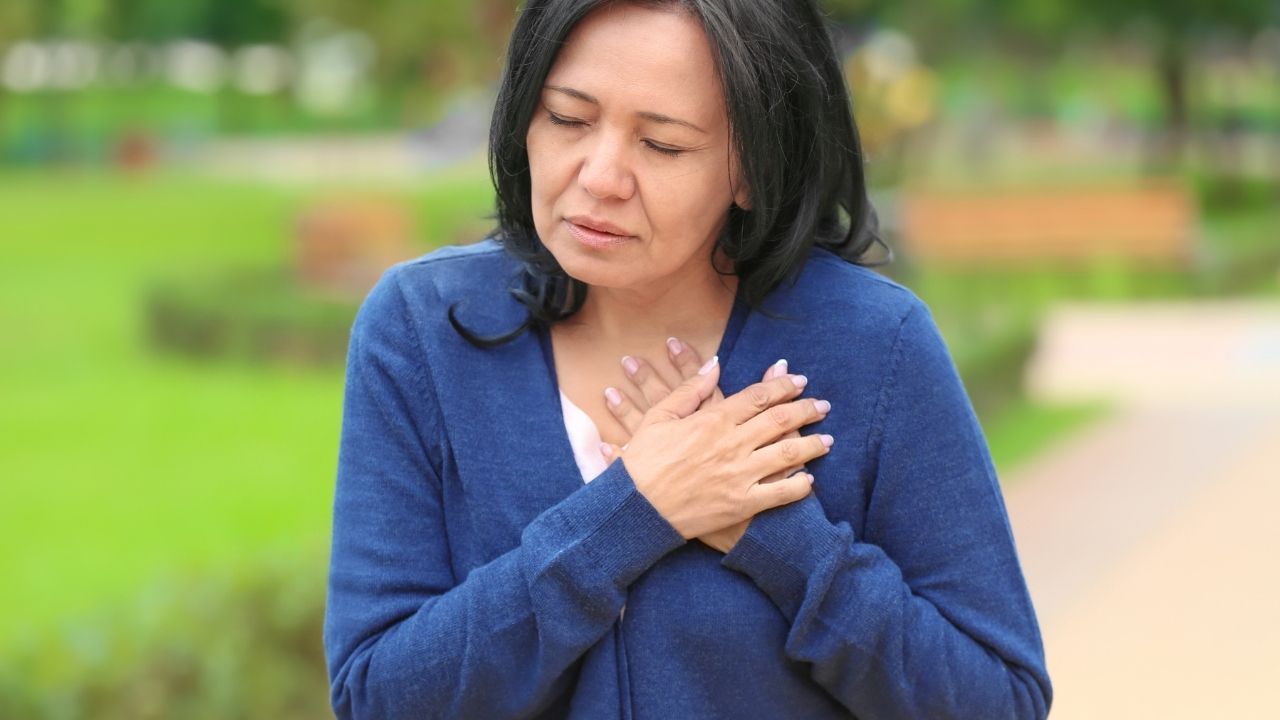Allergic responses to seasonal allergies, previously seen as a ‘mere discomfort are transforming into global health issues, particularly in urban and peri-urban environments such as Chandigarh and its agglomeration, which includes parts of Punjab, Haryana and Himachal Pradesh.
There has been a huge increase in the number of patients presenting with allergic type symptoms over the last ten years. Those can be symptoms like sneezing and a runny nose, but also some more problematic challenges, like asthma being exacerbated or chronic sinusitis.
Amcare Superspecialty Hospital, one of the best ENT hospital and multispeciality hospital in Zirakpur has seen this trend in close proximity. Increasing cases of allergy is not a linear phenomenon but a complex problem, driven by uncontrolled urbanization, environmental pollution, and climate change.
This article will address the reasons that seasonal allergies have become worse with the possible regional offenders, symptoms to look for, treatments for seasonal allergies and what Amcare is doing to restore the lives of those with seasonal allergies.

What Are Seasonal Allergies?
Seasonal allergies, which are also technically known as allergic rhinitis or hay fever, happen when your body’s immune system overreacts to particles in the air (like pollen, dust mites, and mold spores) which are generally harmless. These are seasonal allergies since certain allergens come out or are at their peak at specific times of the year.
For instance, tree pollen bursts out during the spring in North India, grass pollen in summer and weed pollen prevails in the autumn. The particles are perceived by the immune system as being threatening because it releases histamines and other substances, which then produce the symptoms of inflammation and discomfort that we call allergies. Left untreated, these signs can develop into long-term respiratory diseases.

Common Symptoms of Seasonal Allergies
People in Chandigarh and surrounding areas suffering from seasonal allergies come with a variety of symptoms. These can include:
• Repeated sneezing, particularly in the morning.
• Nasal congestion or a runny nose that doesn’t respond to the usual treatments for a cold.
• Eyes that are itchy and watery, may even affect vision and be uncomfortable.
• Continual coughing or throat irritation that may be confused with a viral ailment.
• Tiredness and sleep problems, causing difficulty concentrating, feeling peevish, and working less efficiently.
• Headaches or facial pain, typically the result of sinus inflammation.
• Shortness of breath or wheezing, and the person has asthma or chronic bronchitis.
Why Are Seasonal Allergies Getting Worse in Chandigarh?

1. Rising Air Pollution
Although a well-planned Indian city, Chandigarh has not been able to escape the growing menace of pollution. The overall condition of air in the Tricity, including locations in Zirakpur and Mohali, has deteriorated due to increased road traffic, construction, industrialization from all generating an abundance of particulate matter (PM2. 5 and PM10).
There are several reasons pollution is postulated to interact with pollen and other allergens:
• Allergens can stick to pollen particles to make them more likely to cause an allergic reaction.
• They can harm the lining of the nose, making it more sensitive and leaky.
• For people who already have respiratory problems, linking allergens with pollutants may worsen symptoms.

2. Climate Change and Longer Pollen Seasons
Allergy patterns are impacted by changing climate worldwide. Plants flower earlier and maintain their blossoms for longer, due to warmer temperature. This results in an increased length of exposure o people towards the allergen.
Higher levels of carbon dioxide in the air also lead to:
- More growth in plants and particularly in allergenic ones such as Parthenium and Ragweed.
- Increased pollen amounts, frequently with higher allergenic potency.
This has been to say that what was a 4-6 week allergy season, has now become 8-12 weeks in some regions of the north of India. Eventually, People with allergies are vulnerable to prolonged exposure, more medication and a greater likelihood of complications.

3. Urbanization and Dust Pollution
Rapid construction in Zirakpur, Mohali and Panchkula has wrecked natural green belts , resulting in increased dust levels. The construction dust, road dust and unkept green areas add up to an all year round exposure to allergens. The absence of vegetation also increases the exposure of urban environments to airborne allergens.
It has resulted in sudden surge in queries for dust allergy symptoms and treatment in hospitals in the region. Repetitive exposure to the dust from road construction may cause chronic sneezing, nasal blocking, watery eyes, and in some cases even asthma. People who are looking for a dust allergy permanent treatment are now visiting to health care centers such as Amcare we cater to long-term treatments.
4. Lack of Public Awareness
Seasonal allergies are still confused by common colds or viral infections by the people. This causes self-medication or even a late diagnosis and possible complications. Little knowledge is available about allergy testing, allergen avoidance, preventive care and immunotherapy in the smaller towns and semi-urban areas around Chandigarh.
Some people don’t go to specialist because of cost or misinformation and that’s just downright wrong and makes people suffer for longer than they should. It requires educational and outreach efforts on the part of hospitals such as to reverse this trend.
Who Is at Risk?
Some people are more prone to seasonal allergic reactions to high pollen levels, particularly in zones at high risk such as Chandigarh and adjoining areas. Risk factors include:
- Strong Hereditary Links: If a parent or parents have allergies, it is more likely their child will develop allergies.
- Residing in a highly polluted area: City dwellers are subject to more allergens and irritants.
- Asthma sufferers: People who have asthma tend to suffer worse symptoms during allergy seasons.
- Children or the immunocompromised: These groups of people are not as tolerant of exposure to allergens as other categories.
- Indoor living: Those who spend much of their days indoors may have a greater exposure to dust mites, mold spores and other indoor allergens.
Common Triggers in Northern India
| Season | Allergens | Sources and Locations |
| Spring | Tree Pollen (Neem, Eucalyptus) | Chandigarh, Patiala, Shimla |
| Summer | Grass Pollen (Bermuda, Timothy) | Zirakpur, Mohali, Ambala |
| Autumn | Weed Pollen (Parthenium) | Ludhiana, Hisar, Solan |
| All Year | House Dust, Mold Spores | Indoor settings across the region |
Diagnosis at Amcare Hospital
Amcare Superspecialty Hospital, a prominent ENT hospital in Zirakpur, offers advanced testing facilities to diagnose allergies. Prompt diagnosis is necessary to identify precipitants and to start correct treatment. Our diagnosis include:
Skin Prick Testing (SPT)
It’s the most widely used way. Pinpricks of suspected allergens are applied to the skin. A response proves an allergy is present. The test is fast, accurate and appropriate for adults and children.
Blood Tests
Blood tests for Immunoglobulin E (IgE) can also be used to diagnose allergies, particularly if SPT cannot be performed due to skin problems or age. These tests also determine the severity of allergic reactions.
Nasal Endoscopy
In patients with chronic nasal congestion or sinusitis, nasal endoscopy is performed to visualize internal nasal anatomy and exclude structural pathology. This test is particularly important when there is inflammation which can make it difficult to reveal underlying problems.

Treatment Options
Medicines, appropriate life-style changes as well as modern symptomatic treatment is used by Amcare Hospital to cure seasonal allergic. Our treatment options include:
Medications
Anti-histamines for sneezing and itching to control it temporarily within minutes.
Nasal corticosteroids to decrease inflammation.
Leukotriene inhibitors in allergy-related asthma.
Short-term use of decongestants when symptoms are too severe.
For a dust allergy permanent cure, Amcare’s holistic methodology including medicine, environment control, and immunotherapy can give you permanent relief. All these are long-term solutions that don’t make you dependent on them. Apart from medications we also focus on basic Allergen avoidance strategies and Immunotherapy also.
Allergen Avoidance Strategies
- Close windows when pollen is at its peak in the morning and in the evening.
- Employ HEPA filters in air conditioning.
- Wash hands and face upon returning indoors.
- Bedding and curtains should be washed frequently.
- Stay indoors on high pollen count days.
- Bathe pets often, since they can track allergens inside.
Immunotherapy
This is a process of slowly exposing a person to small amounts of allergen to help them build a tolerance. It can be in the form of:
Subcutaneous Immunotherapy (Allergy Shots)
Sublingual tablets or drops (SLIT)
With time, immunotherapy can decrease sensitivity and can even remove dependency on daily medicine.
Lifestyle and Home Remedies
Amcare Hospital also consults on integrative modalities to help sustain recovery and holistic health: Essential lifestyle and home remedies include:
• Steam to help unblock the nose, and clear the airways.
• Saline nasal sprays to open your nasal passages and rinse out allergens.
• Eating local honey for desensitization (experimental but popular practice.
• Hydration and a healthy diet to support your immune system and healing.
• Probiotics, which can help in gut health, which in turn plays a role in immune response.
• Ongoing physical activity to improve lung function and immunity.
When to Consult a Specialist
If symptoms do not subside after two weeks, or if they disrupt your daily activities it is time to see an ENT doctor. Warning signs include:
• Recurring sinus infections
• Feeling tired all the time and unable to sleep
• Breathlessness or tightness in the chest
• No response to OTC medications
• Relying on antihistamines to get through the day
Early referral will allow appropriate management and prevent the development of more serious conditions.
Role of Amcare Hospital
Being a prominent ENT and Allergy provider, Amcare Superspecialty Hospital is known for the following:
• An interdisciplinary team of ENT surgeons, pulmonologists, and immunologists.
• State-of-the-art testing laboratories and diagnostics facilities.
• Individual care plans for each patient.
• Double down on preventive care and patient education.
• Latest technological advances using evidence-based protocols.
Whether you are looking for dust allergy permanent treatment or Seasonal Relief, Amcare assures quality and long lasting effects.
Summary
The cases of Seasonal Allergies in Chandigarh are turning into a norm and more and more grave in nature due to a mix of environmental changes, pollution and escalating weather trends. “Every year, as the winter season changes into spring and the monsoon recedes to make way for autumn, thousands of residents develop symptoms similar to sneezing, running nose, itchy eyes and even sinus congestion and skin rashes. Such allergies are typically caused by airborne pollen, dust mites, mold spores, and airborne pollutants that rev up during these transitional seasons.
With more green spaces and blooming plants, Chandigarh witnesses higher pollen load, which is aggravated by its growing air pollution levels, making it the worst time for allergy sufferers. Climate change has been prolonging allergy seasons, which means symptoms are lasting longer and stronger for more and more people. Children, the elderly and people with asthma or weak immune systems are at greatest risk.
Seasonal allergy care in Chandigarh needs to be approached by a mixture of medical care and preventive measures. Antihistamines, nasal sprays and limiting outdoor exposure during peak pollen periods may help. Seeing an immunologist or ENT/Otolaryngologist may also be useful in identifying individual triggers. Through better knowledge and prompt action, seasonal allergies can be managed adequately that will lead to healthier and better quality living for the inhabitants.





